1920sClick Here to hear "Camp Meeting Blues" recorded in 1923 by Joe "King" Oliver 1926 The beginning of the end of the Camps between West End and the AirportThe entire eastward stretch of the Lake was bordered by clusters of fishing shacks on pilings, until the initiation in 1926 of the 51/2 mile, 2000 acre land fill called Lakefront Improvement Project. This ultimately provided not only the boulevard and ample strip of landscaped park but also the residential developments of Lake Vista (1936, modeled after the famous cu/-de-sac scheme of Radburn, New Jersey), Lakeshore (1951), Lake Terrace (1953), Lake Oaks (1964), plus New Orleans Airport (1929-34) and the University of New Orleans campus. Source: New Oleans Online-Culture 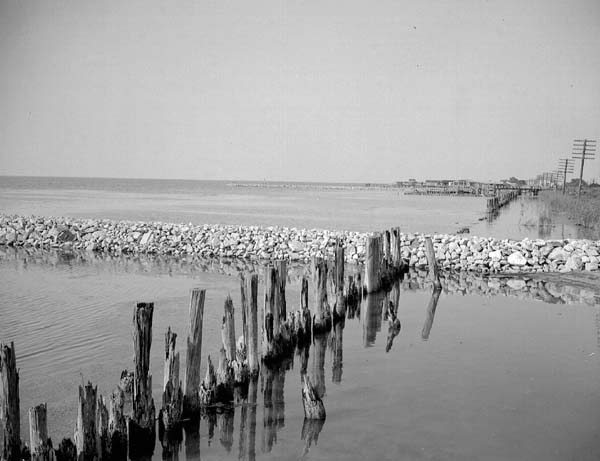 1928 Pontchartrain Beach opens at Spanish FortPontchartrain Beach amusement park opens where Lake Vista is today. It later moves to Milneburg, at Elysian Fields Avenue. This postcard shows the The Wildcat coaster (pictured distant center) opened in 1928 at Pontchartrain Beach, in New Orleans, LA. This twister style coaster was designed by Fred Church and Harry Traver, a pair known for their radical coaster designs of the 1920's. Unfortunately, the ride only lasted until 1938. Source: http://members.aol.com/somekick/pontchartrain.html 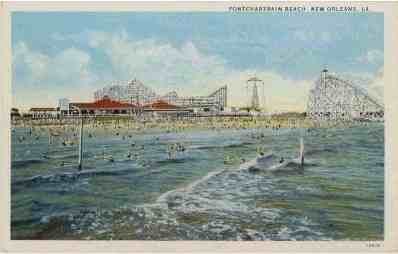 1924 Industrial Canal OpensThe Inner Harbor Navigation Canal, or the Industrial Canal is opened, linking the Mississippi River with the lake, aiding shipping commerce. 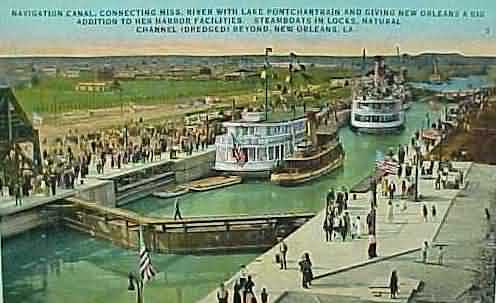 1922 Postcard reads "Spanish Fort, the Coney Island of New Olreans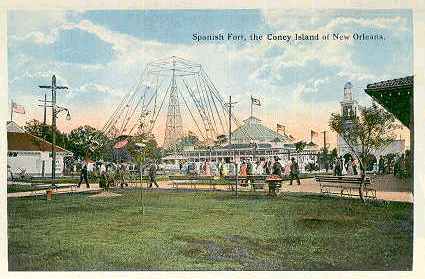 1926 hurricand damages New Canal LightAugust 25-27th, 1926: The New Canal lighthouse was again damaged, causing it to be raised three feet after the storm. 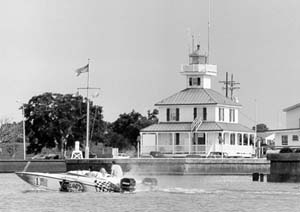 1920's & 30's - Mosquitoes and Pylon by William FaulknerQuotes from a Gambit Weekly article (Rising Star, by W. Kenneth Holditch) about William Faulkner's life in New Orleans: 'In the next few months (1926), Faulkner wrote much of his second novel, Mosquitoes, which was a satiric look at the life of the artists and writers in the Quarter. The story grew out of a yacht cruise on Lake Pontchartrain attended by several members of the creative community the year before. Although the humor is hardly cruel, Anderson was not amused, and many of the others portrayed were still angry 50 years later, feeling that the writer they had befriended had betrayed their trust. Besides Mosquitoes, Faulkner was already at work on his first novel set in his mythical Yoknapatawpha County, Flags in the Dust, and on Father Abraham, a manuscript that would ultimately become the Snopes trilogy. Endless Inspiration Given the fact that Faulkner lived in New Orleans for only 15 or 16 months, the city's influence upon his work was astounding. When he arrived in early 1925, he had written nothing to indicate what lay ahead, but by the time he left at the end of 1926, he had produced two novels, begun work on three others and published a sizable number of newspapers and magazines pieces. He would return to New Orleans on several occasions -- in 1934 for the opening of Shushan airport, about which he wrote the novel Pylon, and again in 1951 when he was awarded the French Legion of Honor.' Source: Gambit Weekly http://weeklywire.com/ww/09-22-97/gambit_covs.html 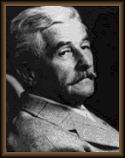 1925 Neighborhoods MapSource: http://www.rootsweb.com/~usgenweb/la/orleans/images/no1925.jpg  Joe (King) Oliver composes West End Blues1885-1938 - Joe (King) Oliver "West End Blues was a sleepy southern blues tune written by Joe "King" Oliver, until it came into the hands of trumpeter Louis Armstrong...in the late 1920's...and changed musical history." Source: National Public Radio's 100 most important American musical works of the 20th century. Joe "King" Oliver is one of the most important figures in early Jazz...his style ...collective improvisation (rather than solos). He was the mentor and teacher of Louis Armstrong. Louis idolized him and called him Papa Joe. Oliver even gave Armstrong the first cornet that Louis was to own. Oliver was blinded in one eye as a child, and often played while sitting in a chair, or leaning against the wall, with a derby hat tilted so that it hid his bad eye. Joe was famous for his using mutes, derbys, bottles, and cups to alter the sound of his cornet.  Armond ( A.J.) Piron's New Orleans Orchestra played for many years at the New Orleans Country Club on Lake Pontchartrain1888-1943 - Armond ( A.J.) Piron's New Orleans Orchestra Piron joined Papa Celestin's Tuxedo Orchestra in 1916 and started Piron's New Orleans Orchestra in 1918. The band traveled to New York in 1923 and returned the following year to play at the Roseland Ballroom. Piron returned to New Orleans and played for many years at the New Orleans Country Club on Lake Pontchartrain, in night clubs, and on Mississippi river boats. Armand Piron's New Orleans Orchestra was one of the most popular bands in New Orleans in the 1920s. They travelled to New York and played at the Cotton Club and Roseland in 1923. They also recorded two songs with Blues singer Esther Bigeou while in New York, including a fine vocal version of West Indies Blues. 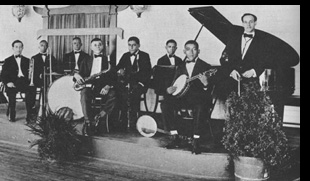 Sharky Bonano played Jazz at Marie and, her husband, John Quarrella's establishments in Milneburg.1899-1972 - Gustave Joseph (Sharkey) Bonano Sharkey Bonano was one of the most charismatic and beloved jazz men of old New Orleans. His charismatic singing and trumpet playing draw comparisons to Louis Prima (he even starred in a band with Prima's brother Leon in the 1930s) but his sound and personality was indisputabley his own. A powerful, hot trumpeter, Bonano played in and around his home-town as a teenager. According to Margo Duplantier Rhinehart (Sharkey's great-grand niece) "The family spells his name: Gustave Joseph Bonano. According to his older sister, Marie Bonano Quarrella, Sharkey was born on April 9, 1898, but his death notice indicates he was mostly likely born in 1899. Also, he was born in New Orleans not Milneburg. He spent a lot of time with his sister Marie Quarrella and played his jazz music at Marie and, her husband, John Quarrella's establishments in Milneburg. After John's early death (1922), Marie's family (I assume this meant Sharkey too) moved to Milneburg to help Marie run the various family businesses. Source: http://www.sonicnet.com/artists/ai_bio.jhtml?ai_id=504502 and Margo Duplantier Rhinehart. 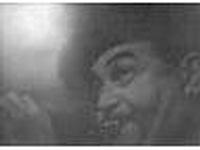 1928 Louis Armstrong Records West End Blues1900-1971 - Louis Armstrong "It was a lakeside summer spot in New Orleans that inspired the song that would become one of the world's great Jazz masterpieces." The song was Armstrong's recording of "West End Blues" As part of the NPR (National Public Radio) 100 Review of the 20th Century's most important American musical works, NPR's John Burnet traveled to New Orleans in search of the source of Jazz genius..." Excerpt from National Public Radio's 100 most important American musical works of the 20th century Photo Credit: http://www.redhotjazz.com/louie.html Source: National Public Radio's 100 most important American musical works of the 20th century.  1923 Milneburg Joys (Jazz) is recordedLeon Roppolo's Friars Society Orchestra ( also known as the New Orleans Rhythm Kings. Leon Roppolo was considered a genius by his contemporaries and like Bix Beiderbecke and Buddy Bolden, he was another of the tragic young men of early Jazz. He is remembered as being a pioneer of the jazz solo, as opposed to the collective improvisation of most New Orleans bands and for his lyrical and modern clarinet and alto saxophone playing. He was born in Lutcher Louisiana, upriver from New Orleans. His family moved to New Orleans about 1912 with in a year or two he was playing music professionally at Lake Pontchartrain and Bucktown. audio milne joys.ram Hear Milneburg Joys (Leon Rappolo, Paul Mares, and Ferdinand "Jelly Roll" Morton) Recorded by the New Orleans Rhythm Kings, Richmond, Indiana, July 18, 1923 featuring Morton at the piano. The piece is named after the Milneburg Resort on Lake Pontchartrain five miles north of downtown New Orleans. 1922-1935 Leon Roppolo's bandThe Friars Society Orchestra (was also known as the New Orleans Rhythm Kings). At one time the band included Jelly Roll Morton. The New Orleans Rhythm Kings were heavily influenced by King Oliver's Creole Jazz Band and became the first group to put out a "racially mixed" Jazz record in 1923 with "Sobbin' Blues", featuring Jelly Roll Morton. They recorded Milneburg Joys (Leon Rappolo, Paul Mares, and Ferdinand "Jelly Roll" Morton) as the New Orleans Rhythm Kings in Richmond, Indiana on July 18, 1923-- featuring Morton at the piano. The piece is named after the Milneburg Resort on Lake Pontchartrain five miles north of downtown New Orleans. 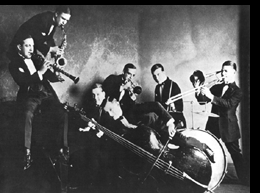 1926 Al Broussard's band (including Danny Barker, pictured) performed weekly on the Lake1909-1994 - Danny Barker In 1926, Al Broussard organized a 12-piece jazz and dance band. His ensemble, which included Danny Barker, Don Albert and Father Al Lewis, would perform at dances held near Lake Pontchartrain. Source: Gambit Weekly Online 04-24-01 http://www.bestofneworleans.com/archives/2001/0424/feat-arts.html  1923 - Sheet music for Milenburg JoysNotice the mis-spelling of Milnebug. I remember my older relatives (now gone) who spoke nostalgically about "Milenburg" 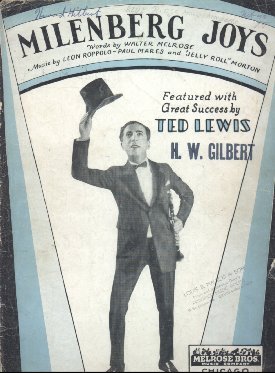 1927 - The Beginning of the end of MilneburgMilneburg was the other popular early resort area on the Lake, at the terminus of the Pontchartrain Railroad line, which began operation in 1831. New Orleanians rode the famous "Smokey Mary" out to the many camps that dotted the shoreline and to the hotels, restaurants, roadhouses, shooting galleries, bathing facilities and fishing piers. It was at Milneburg's bandstands, dance halls and honky-talks that much of New Orleans' early jazz was first heard. Like Spanish Fort, Milneburg fell victim to changing tastes and to the massive construction projects undertaken by the Orleans Levee Board and the WPA in the late 1920s and 1930s. This Levee Board photograph (included among the WPA photographs of Lakefront projects) was taken on October 5, 1927 from the famous Milneburg lighthouse looking to the east after demolition of the camps and other structures that occupied the shoreline. The "after" view below, taken several years later on May 28, 1941, shows the exact same area with Pontchartrain Beach and its WPA-built bathing beach, bath house under construction, and one of two light towers built by the WPA for night swimming. Source: http://nutrias.org/~nopl/monthly/july2001/3jul01.htm 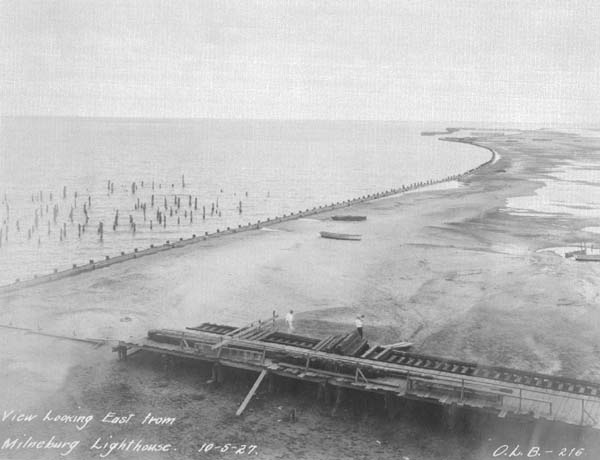 1928 - West End Blues Sheet Music CoverDuring the hot summers in New Orleans, music fans headed to camps on Lake Ponchartrain. The camps consisted of shacks built on stilts on the lake which allowed for cooler breezes to help beat the heat and humidity. Source: http://www.jass.com/place.html 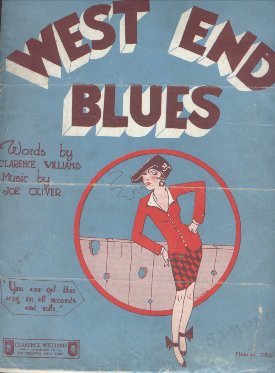 1924 Johnny Bayersdorffer plays Jazz at Spanish FortTokyo Gardens Ballroom was situated in the resort at Spanish Fort...Among the jazz groups that performed there was a band led by the cornetist Johnny Bayersdorffer...in the summer of 1924. Source: http://www.xrefer.com/entry.jsp?xrefid=628454&secid=.101.- Pictured are Johnny Bayersdorffer and his Jazzola Novelty Orchestra 1922. Left to Right: Chink Martin, Tom Brown, Johnny Bayersdorffer, Leo Adde, Johnny Miller, Steve Loyacano, Nunzio Scaglione. 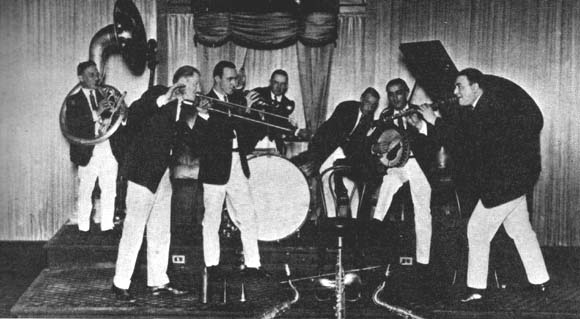 1926 - New Orleans Owls record West End RompThe New Orleans Owls played regularly at hotels in New Orleans between 1922 and 1929. They were one of only a handful of bands that were recorded in the city of New Orleans in the 1920s (1924-"Sailing on Lake Pontchartrain, 1926-"West End Romp"). The band decended from The Invincibles String Band which had been playing around New Orleans since 1912. For a time Irvine (Pinky) Vidocovich played with the Owls  1924 the Owls recorded SAILING ON LAKE PONTCHARTRAINIn 1924 the Owls recorded SAILING ON LAKE PONTCHARTRAIN--Sheet music by Nell & Bill Wrigley; words by Emmett Walsh, Jr. Atlanta, GA.: Piedmont Music Co. (1924); pp 5. The recording (78rpm) was listed in Brian Rust's JAZZ RECORDS, 1897-1931. The band at that time consisted of Bill Padron on cornet; Benjie White on clarinet; Lester Smith on tenor; Mose Farrar on piano; Rene Gelpi on banjo; Dan LeBlanc on bass; and Earl Crumb on drums. 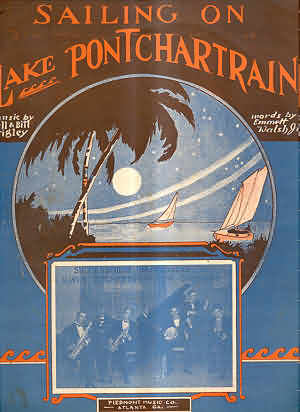 1924 - Jelly Roll Morton records Bucktown Blues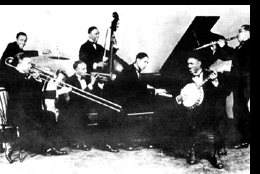 BucktownDuring the days of Prohibition, Bucktown was known for its speakeasies, houses of prostitution, and gaming dens. Gambling was legal in what was known as 'the free State of Jefferson.' Bucktown was a rowdy, wide-open place where the barroom brawls were common. The settlement is said to have been named for the young bucks who came there looking for a rough time. There are other stories about the origin of the name. Some say that the village was named for the good deer hunting in the area. Others say it was named for a local fisherman, Oliver 'Buck' Wooley. Amid the unrestrained gaiety, Bucktown was one of the places where jazz was born with such tunes as the 'Bucktown Bounce' by Johnny Wiggs and the 'Bucktown Blues' by Jelly Roll Morton. Pictured is Jelly Roll (on the piano) Morton's Red Hot Peppers, which at times included Barney Bigard (Clarinet), Baby Dodds (Drums), Johnny Dodds (Clarinet), Kid Ory (Trombone), & Johnny St. Cyr (Banjo, Guitar, Dialogue) Original Sources: Betsy Swanson - at http://www.deanies.com/MM017.ASP?pageno=28 and The Red Hot Jazz Archive at www. redhotjazz.com  1926 Spanish Fort closed. 1928 The first Pontchartrain Beach at Spanish FortThe first Pontchartrain Beach opened in 1928, across Bayou St. John from the old Spanish Fort on filled land newly reclaimed from the Lake by the Orleans Levee Board. The "Old Beach" featured a boardwalk, a bath house and rides. But the hard times of the Depression hit the new amusement park hard, in spite of improvements (including a seawall to replace the boardwalk and a vehicular bridge over Bayou St. John) made by the Batt family, which took over its operation in 1933. In 1938, when development (with the help of the WPA) of Lake Vista began just next door, the Batts took advantage of the opportunity to move the park farther east along the lakefront to Milneburg, and the "Old Beach" was demolished. This photograph of the entrance to the park was taken on March 7, 1939, shortly before demolition began. Source: http://nutrias.org/~nopl/monthly/july2001/2jul01.htm 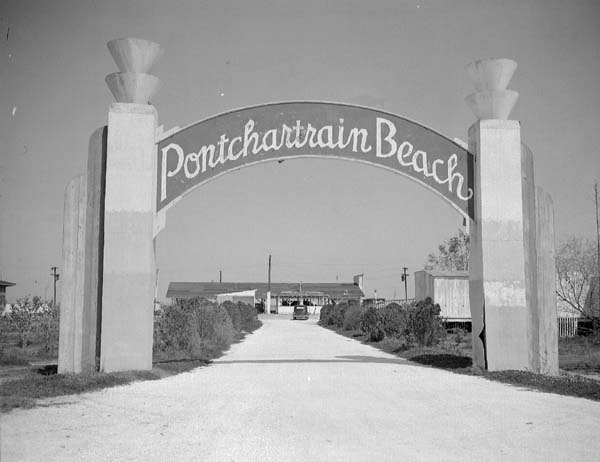 1922-1935 The Friars Society Orchestra plays on the LakeThe Friars Society Orchestra was also known as the New Orleans Rhythm Kings. At one time the band included Jelly Roll Morton. 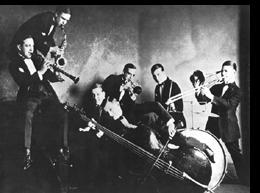 1920 s - Postcard of Amusement Park at Spanish FortPostcard circa 1920 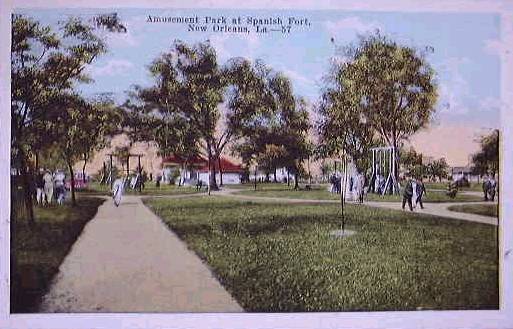 1920s - Jazz with A.J. PironArmand J. Piron (1918-1928) with Peter Bocage formed A.J.Piron & his Novelty Orchestra and played at Tranchina's Restaurant in Spanish Fort, on Lake Pontchartrain, LA. Piron joined Papa Celestin's Tuxedo Orchestra in 1916 and started Piron's New Orleans Orchestra in 1918. The band traveled to New York in 1923 and returned the following year to play at the Roseland Ballroom. Piron returned to New Orleans and played for many years at the New Orleans Country Club on Lake Pontchartrain, in night clubs, and on Mississippi river boats. Sources: http://www.redhotjazz.com/piron.html http://nfo.net/.WWW/JOB.html Other Jazz venues at Spanish Fort included: Tokyo Gardens Ballroom. It was situated in the resort at Spanish Fort, near where the Bayou St. John runs into Lake Pontchartrain. Among the jazz groups that performed there was a band led by the cornetist Johnny Bayersdorffer, which was resident in the summer of 1924. Tranchina's Restaurant It was situated in the resort at Spanish Fort, near where the Bayou St. John runs into Lake Pontchartrain. Jazz was performed there from at least 1918, when A. J. Piron formed an orchestra to begin an engagement at the restaurant, which continued intermittently until 1923. Source: www.xrefer.com 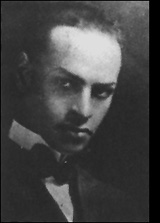 1920s Spanish Fort postcardNotice railroad tracks for the "Smokey Mary". Postcard. Date unknown. 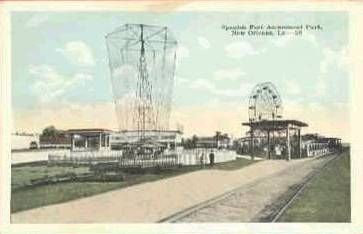 1924 Spanish Fort postcardpublished by C. T. American Art. Postmarked New Orleans, 1924 posted 2002-04-01 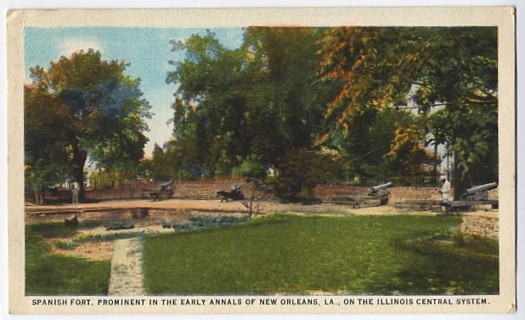 1921 Industrial Canal OpensThis postcard describes the 1921 opening of the Industrial Canal--contrary the information below which states it opened in 1924. Postcard reads Postcard "Locks, Industrial Canal, New Orleans, La-142." Showing the "Commerical Pathfinder of Wilmington, Del. going thorough the locks. "75% capacity of the largest lock at Panama". 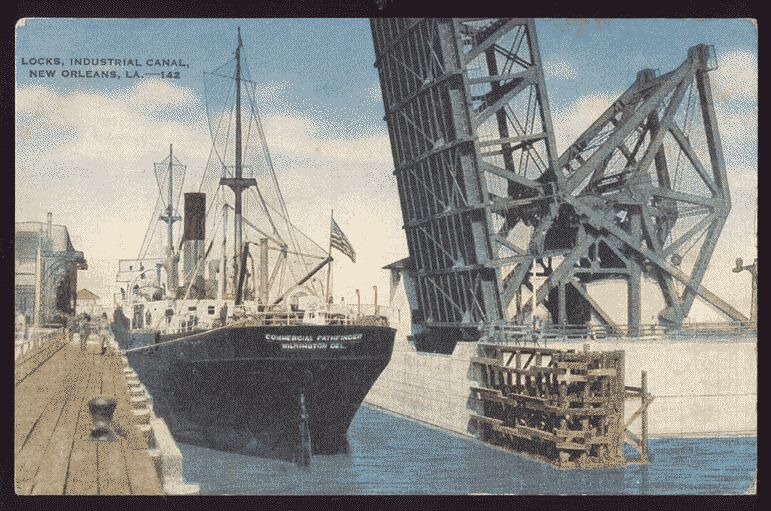 1921 Industrial Canal Opens - back of postcardclick the thumbnail to real the description 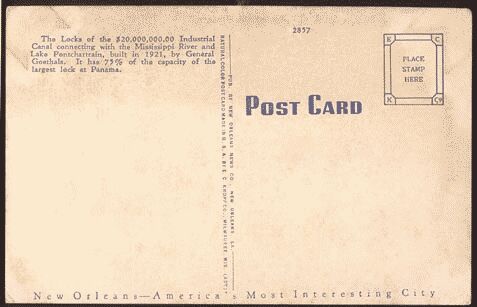 1929 New Basin CanalWell into the 20th century schooners brought lumber, watermelons, charcoal, sand, and bricks from across Lake Pontchartrain into the heart of New Orleans by way of the New Basin Canal. Dug by hand, between 1831 and 1835, through the swamps that lay back of the city, the canal was sixty feet wide and six feet deep and almost seven miles long. Now filled and part of the Interstate Highway I-10, less than half a mile remains uncovered at the lake end, where a Coast Guard station stands on one side and Southern Yacht Club on the other. In this 1929 photograph provided by Albert McClsokey Browne, the schooners are lined up at the head of the canal, not far from the present day Union Station. Collection of Frank Gordon & Son New Orleans, Louisiana USA Source: http://www.bergeronstudio.com/fg01/p44.html 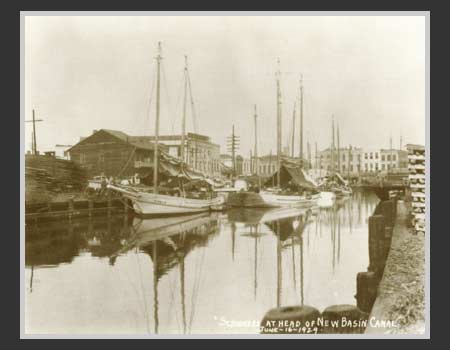 1922 - Pontchartrain Railroad ScheduleThe Pontchartrain Railroad continued to run its "Smoky Mary" train between Decatur Street and Milneburg on the Lake until March 15, 1932. This timetable shows that on Sundays, at least, the trip lasted a total of twenty minutes. ~ Transportation to Milneburg was achieved via a branch line of the L. and N. R. R., on a wheezing vehicle, pulled by an engine known as "Smoky Mary." When put to the test, Smoky Mary could, amidst great puffing and blowing and much expulsion of smoke and cinders, attain the remarkable speed of ten miles an hour. Passengers usually emerged with clothes blackened and eyes and throat stuffed with cinders. [GumboYa-Ya (1945), p. 421] ~ Source: http://nutrias.org/~nopl/exhibits/choochoo/page2.htm 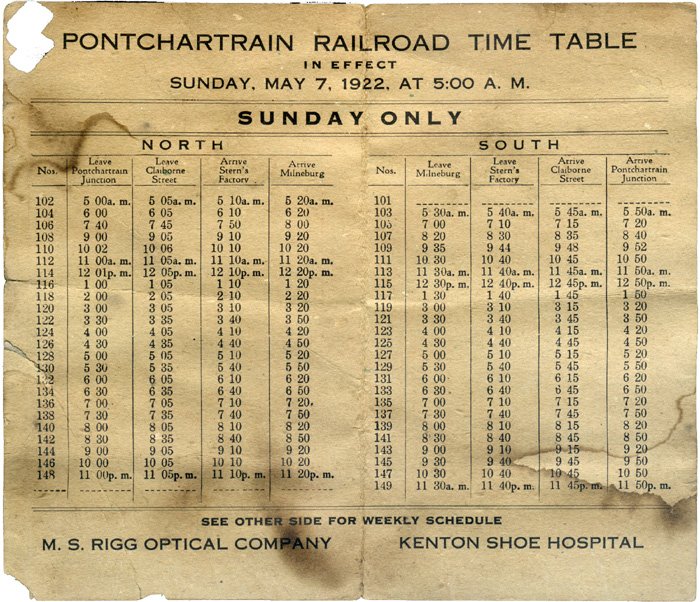 1926 Spanish FortSpanish Fort had been a resort area as far back as the 1820s, but it reached its heyday from the 1880s to around the turn of the century. During this period New Orleanians could travel out to the lake by rail and spend their leisure time swimming, eating, drinking, gambling, listening to bands and light opera. After a fire in 1906, the New Orleans Railway and Light Company purchased the property, built an electrified rail line to the site, and rebuilt the resort as an amusement park, complete with ferris wheel and roller coaster. Spanish Fort closed in 1926, when rail lines stopped running and the Orleans Levee Board's lakefront reclamation projects began. Source: New Orleans Public Library online Images of the Month, July, 2001 - http://nutrias.org/monthly/july2001/1jul01.htm 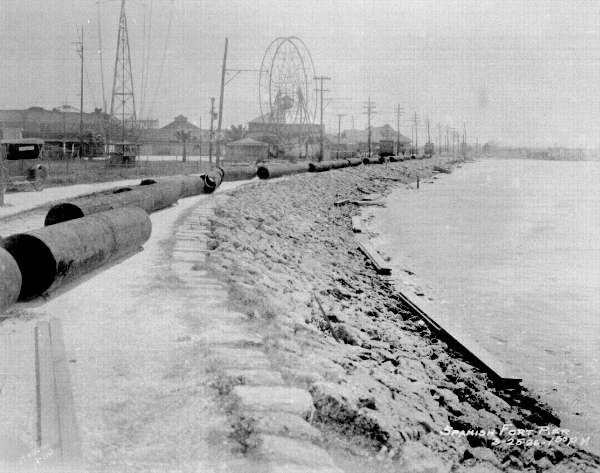 1925 - The current Robert E. Lee Blvd. borders the LakeIn Marvin Perrett's book, "More Nostalgia!", (published by Mr. Perrett in 1982) and just inside the front cover is a reproduction of a photograph captioned, "...Adams Avenue, or Robert E. Lee Boulevard, today...Note the streetcar tracks and the camps on either side of the levee here at one time. It was later filled in...out to the Coast Guard Lighthouse as we know it today". The photo is dated 1925.  1920s - Another view of Spanish FortBack of postcard reads "The back advertises, Spanish Fort, the Coney Island of New Orleans erected in 1770, beautiful park on Lake Ponchartrain, and favortie, resort for those who enjoy the water, with its attendant sports of yachting, boating, and bathing. E. C. Kropp, Milwaukee, Wisconsin published the card." 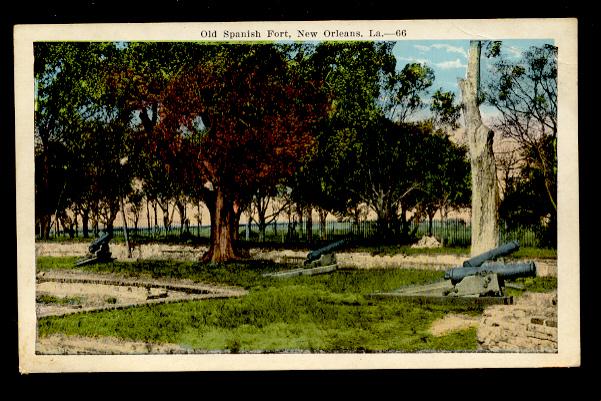 |
|
